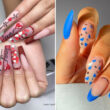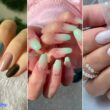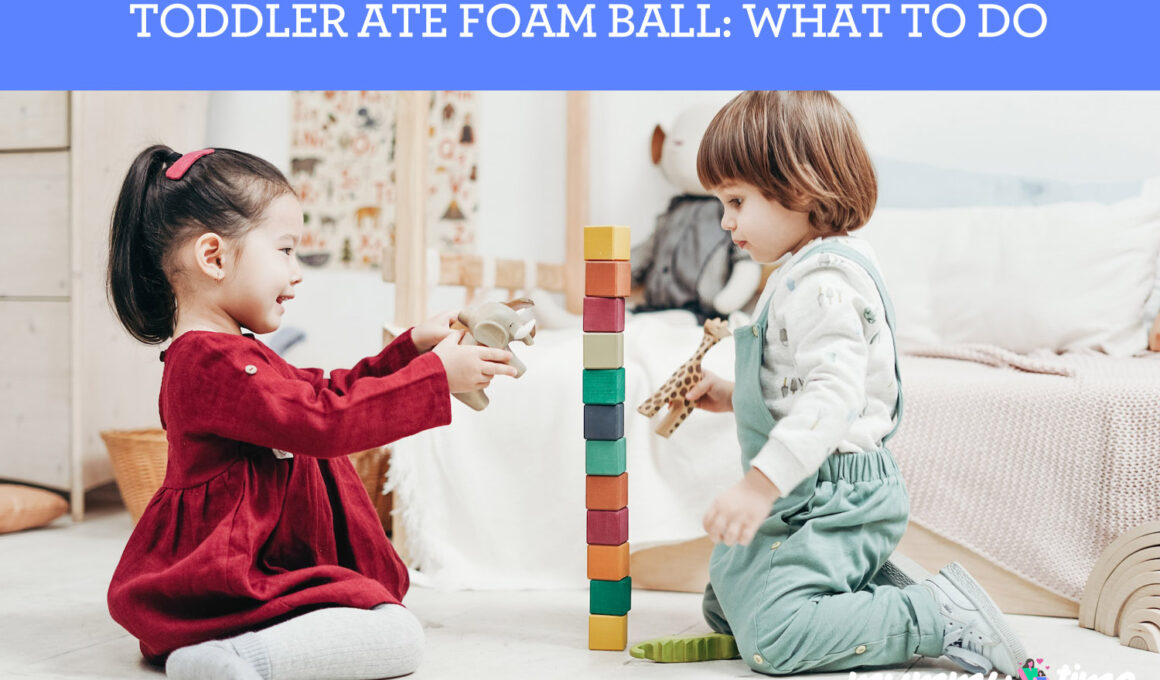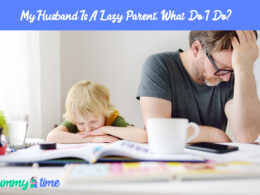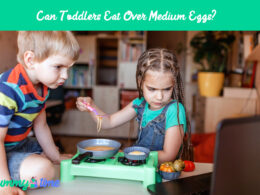In This Article Show
Children will practically put anything in their mouths, which is why they must be watched closely. Your little one will sure do a lot of quirky things, and common ones include putting strange objects into their mouth or inserting it in their nose, which can, in turn, warrant a visit to the emergency room.
Foam balls, also known as styrofoam balls, come in various shapes, sizes, colors, and types; based on their uses, they can easily be found with kids.
Foam balls can be from coated foam playground balls, styrofoam craft balls, and other toys. Foam balls come in so many varieties; you can also have so much fun with them. However, as we all know, toddlers love exploring; hence it is not so much of a surprise when it is discovered kids love chewing on foam balls.
We all know that infants and small children will eat the weirdest thing they can find in proximity while rejecting the nutritious food you place before them. This is considered to be the way they explore and learn about each item. They are curious about their body, and no parent alive has had a baby swallow something they shouldn’t have.
Do not wait for signs of poisoning before getting emergency care if you notice your toddler has eaten anything they shouldn’t. However, it can be unclear when to do it, especially when the substance seems harmless. Did your toddler eat a foam ball? When should you panic, and what should you do? Learn what to do when your toddler eats foam ball.
What Are Foam Balls Used For?
We are all familiar with foam balls; however, there are so many types that the uses can be pretty confusing.
Great deals to snatch for your little ones 🎉
Foam balls are popular as fillers for pillows, cushions, stuffed toys, pet beds, bean bag chairs, and stuffed animals. Foam balls can differ in color, size, and shape. There is also lightweight foam ball which are molded balls with a soft surface for catching and throwing.
There are lots of great foam balls for kids to play with. These foam balls for toddlers are made with soft, dense polyurethane foam and polyester material which makes them soft and delicate.
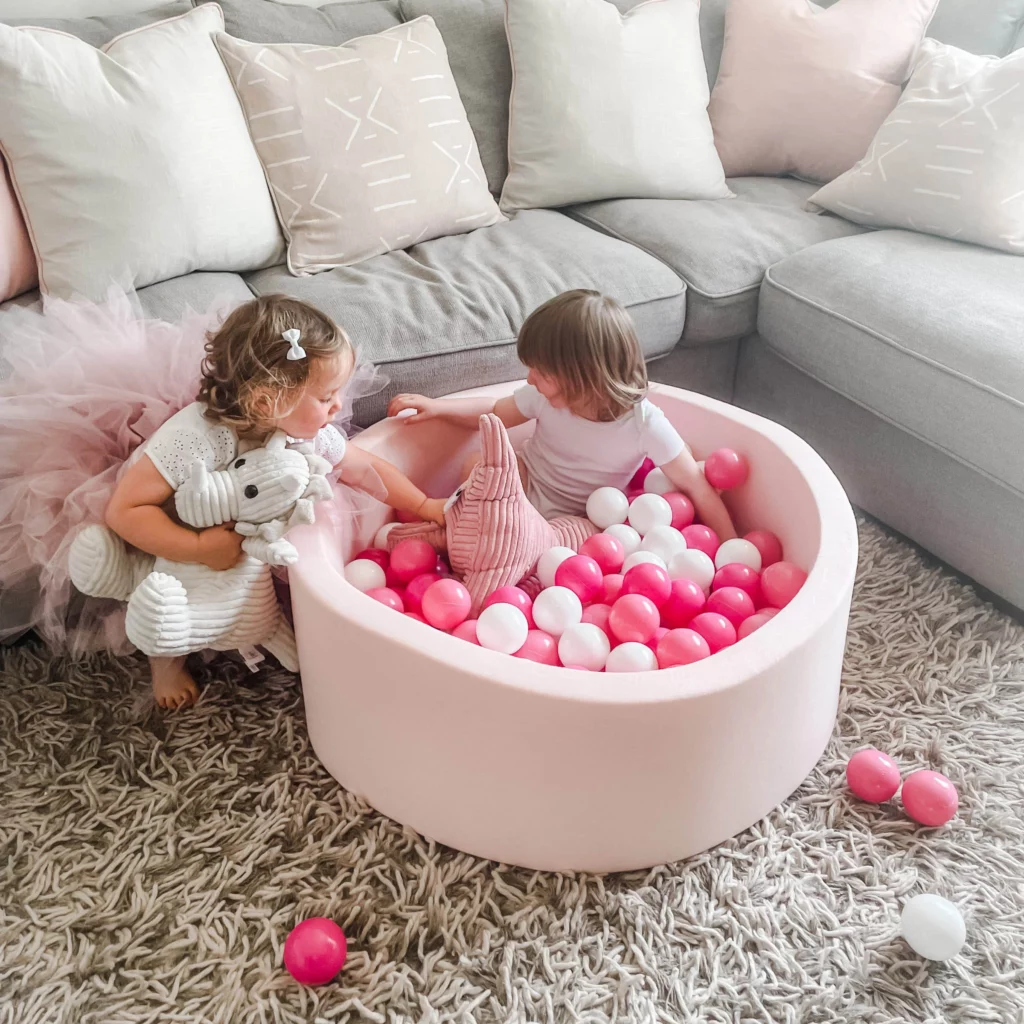
Toddler Ate Foam Ball – Here’s What to Do
Children within the age range of 6 months and 3 years enjoy swallowing foreign objects, and it has been discovered that they enjoy chewing on foam balls, especially when they are teething. Foam balls are made with polystyrene, light and porous material, and although they are not poisonous, a large piece of it can cause gagging and choking. There is also a chance that a part of it can get stuck in the esophagus, thereby causing discomfort.
Foam ball is a popular item in the home. According to the American Academy of Family Physicians, swallowing a small amount of expanded Polystyrene should not be harmful to the body; however, it is still highly recommended that a situation where your toddler swallows this should be avoided.
The amount of foam ball your toddler eats will determine the effects it would have; large amounts can lead to blockage of the airway, and get stuck in the throat, so parents are advised to seek medical help immediately. Regardless of how harmless a foam ball looks or how small the quantity consumed is, keep an eye out for any sign of choking or coughing from your child.
It is advised that parents seek medical help if a large amount of foam ball is consumed, and the child should be overseen for a few days for any sign of infection or inflammation. X-ray or bronchoscopy might be needed depending on the severity of the issue.
Parents are encouraged to learn the first aid treatment that can be given in situations like this. In addition, keep foam balls away from your toddler or any other foreign objects they are likely to put in their mouth far away from them.
Tips to Help Toddlers Who Chew On Anything
It has already been established that as infants grow up, they use their mouths to explore the world, which is why it is normal for them to chew on anything they lay their hands on.
Chewing on anything is a sensory need they have; however, when care is not taken, they can eat things that can be harmful to them. Hence, here are some tips to help you stop your toddler from chewing and eating everything they find.
- Provide chewable toys or jewelry
- Drinking thick liquids like pudding or applesauce through straws
- Blowing balloons, wind instruments, or whistles
- Humming
- Brushing teeth with an electric toothbrush
- Eating crunchy and chewy snacks.
Also, it would be best if you tried to figure out why your child is eating anything that comes its way. Knowing the cause can go a long way in minimizing it; children are discovered to chew on things when they are anxious, bored, overstimulated, or deficient in any nutrients. It can be helpful to look for patterns that lead to chewing on something.
In Conclusion
Toddlers chewing on things is quite normal; it helps their sensory-motor development. This is the way they learn about the sizes of an object and how big or small they are.
Chewing, however, can be an issue of concern as it exposes children to potential choking or chemical substances, just as a foam ball, which is not poisonous but can lead to coughing, choking, and inflammation.
Furthermore, you shouldn’t wait for any signs of inflammation before taking your child to a doctor, especially if the quantity he/she ate is large. Toddlers are natural explorers and will keep on investigating with their mouths. Most of the time, this bizarre predicament works just fine, and you get a tale out of it.


